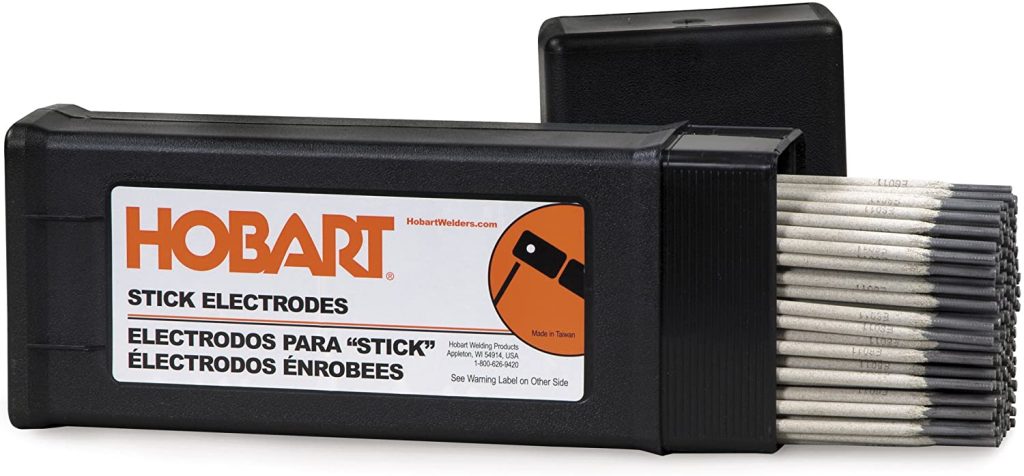The welding rod is one of the essential parts you can’t overlook while welding any materials. It assists in attaching small metal pieces together, giving them a nice shape.
But here comes the most confusing factor: choosing a single one among 3/32 vs. 1/8 welding rods. Here, I’ll help you pick up the right one.
3/32 Welding Rod

Among seasoned welders, 3/32 welding rod is a common name. Let’s find out how you can define it and what you can weld with it:
How We Define 3/32 Welding Rod?
Defining a 3/32 welding rod isn’t rocket science! It presents a relatively tinier puddle, compatible with shallow conditions, and the outer appearance will be smoother than the 1/8 welding rod.
What Can You Weld with 3/32 Rod?
A 3/32 rod is highly capable of welding metal sheets that come in a size of not less than ¼-inches. For a 7042, the max requirement of an amp will be around 100-145.
1/8 Welding Rod

Many welders love to rely on the 1/8 welding rod, particularly for stick welding. Find out the way of defining it and its common usage:
How We Define 1/8 Welding Rod?
Unlike the 3/32 welding rod, the size of the puddle is relatively bigger. And talking about the appearance, you’ll find it kind of rough as it is ideal for rusty surfaces and stuff like that.
What Can You Weld with 1/8 Rod?
If the metal thickness that you want to weld is more than 1/8 inches, you must go for nothing but the 1/8 rod. In fact, it’ll ensure a faster speed while welding.
For 6011 and 6010, the amp requirement should be about 75-125.
3/32 Vs. 1/8 Welding Rod – A Detailed Comparison
You can find so many differences between the 3/32 and 1/8 welding rods from puddle to welding position. So, for your convenience, I’m going to share their detailed comparison right here down below:
Puddle
For stick welding, there is no doubt that the welding rod of 1/8-inch is by far the most common choice among welders. As I’ve mentioned, you’ll find the puddle of the 3/32 rod relatively smaller than the 1/8 rod.
Alongside that, the rate of travel speed is also a bit slower. But this is definitely a plus for those who are hungry for the easier and more-controlled arc.
The Thickness of Metal
Expert welders often consider the 1/8 welding rod for thick sheets as it is more stable right there.
In contrast, if you want to weld thinner sheets or mild steel Sheet there is nothing better than the 3/32 rod.
Penetration
You’ll find a significant difference between the 1/8 and 3/32 welding rods. In terms of penetration, they won’t work in the same manner, meaning you’ll need to make the right use of them for the best results.
In this case, a 3/32 rod won’t work on fusing metals and such materials, where the penetration level should be deeper. Similarly, the 1/8 shouldn’t be your go-to rod for shallow welding conditions.
Appearance
Can you guess which one offers comparatively slow welding motion? The answer is the “3/32 welding rod.” This might be the reason why it’ll give you a flat and smooth arc on thinner sheets.
Unlike the 3/32, the 1/8-inch welding rod has a rough appearance, which is why it’ll weld only on rough or rusty surfaces. In those particular spots, you’ll feel the necessity of making deep welding.
Splatter
I don’t think the term “splatter” is unknown to you, especially if you’re involved in welding. Actually, it’s a pretty common incident that you may notice during GMAW (gas metal arc welding).
In the fewest possible words, molten material’s droplets produced by arc welding are known as spatter. In comparison between 3/32 and 1/8-inch welding rods, the 3/32” will offer comparatively less splatter.
Amp Difference
For working with numerous electrodes, the 3/32 and 1/8 welding rods will need a different amount of amp rates. To let you better understand, I’d like to share an informative amp chart of some common electrodes you may look for:
| Welding Rod | Amps of 3/32 Inches | Amps of 1/8 Inches |
| 6010 | 40-80 | 75-125 |
| 6011-6012 | 35-85 | 80-140 |
| 6013 | 45-90 | 80-130 |
| 7014 | 80-125 | 110-160 |
| 7018 | 70-100 | 115-165 |
| 7024 | 100-145 | 140-190 |
What Welding Position (Overhead, Vertical, Horizontal, or Flat)
According to AWS (American Welding Society), there are 4 basic positions of welding available, including –
- Overhead position
- Vertical position
- Horizontal position
- Flat position
Overhead Position
In a word, this position is accomplished from a metal joint’s underside. The accumulated material sags or drops in the plate, so the bead gets a higher crown.
Vertical Position
In contrast, the weld’s axis stays kind of vertical right here in this position. Moreover, molten metal generally runs down. You’re allowed to control the metal flow by indicating the flame up.
Horizontal Position
In this welding position, the weld’s axis turns approximately horizontal. For making joints, you’ll need more practice than the previous one.
Flat Position
In contrast to the overhead position, it’s accomplished from the joint’s upper side, and the weld’s face should stay horizontal. Among many welders, this is one of the most preferred positions.
Last Words
After going through the entire article, I hope you’ve enjoyed the battle of 3/32 vs. 1/8 welding rod. Make sure to get the right one to fulfill your necessity in the best way possible.
By defining the rod, you can easily find the one that matches your desired welding projects.

I see You’re really a just right webmaster. This web
site loading velocity is amazing. It sort of feels that you’re doing any unique trick.
Also, the contents are masterpiece. you have done a excellent job on this topic.
Thanks a lot. Keep supporting.